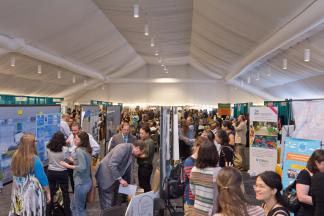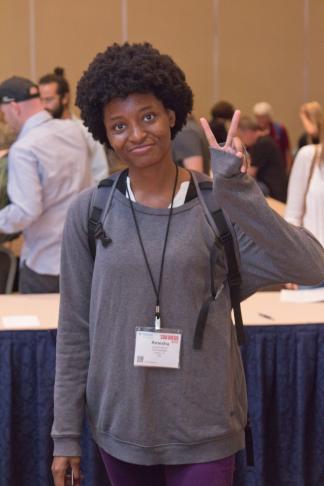Last week, I had the tremendous pleasure of meeting Dr. Ruth Wilson when we both were speakers at the Natural Learning Initiative’s Design Institute. If you don’t know Ruth, haven’t read her books, taken her courses, or heard her speak, she is considered by many to be an instrumental figure in starting the field of early childhood environmental education.
She told a story about writing her first grant to support her idea to bring the fields of early childhood education and environmental education together in the early 1990s. She sat in on the meeting when the grant reviewers debated the pros and cons of the applications. When they got to her proposal that was focused on early childhood education, one reviewer said, “Isn’t that just babysitting?”

She also had funding to attend the NAAEE conference that year. There were no sessions related to early childhood education, so she posted signs all around the conference center asking anyone who was interested in working with young children to meet with her. One person showed up.
But look how far we have come. The 2015 NAAEE conference and research symposium just wrapped up in San Diego, CA, and it was clear that young children are now very much on the minds, and in the hearts, of the environmental education community. Here are some highlights.
Sessions
Across the conference and research symposium, we counted over 40 sessions of interest to early childhood educators. From exploring race and culture to policy development to outdoor learning resources, the sessions reflected how much the early childhood environmental education field has matured.

Other prominent themes included: effectively preparing early childhood educators in environmental education, sustainability education for young children, integrating STEM (and particularly science) into the curriculum with a focus on nature and the environment, and case studies and curriculum profiles from lunchroom composting to nature exploration to community gardening.
Research

NAAEE also announced at the conference that the third volume of the International Journal of Early Childhood Environmental Education is now available. The journal continues its international focus with articles from the US, Canada, and Norway. This issue explores children’s math and science experiences in a garden, play affordances in a Norwegian early care and education center, a child’s perspective on outdoor play, environmental education as an opportunity for action, and more. Fittingly, Ruth Wilson has provided a Note of Reflection for Volume 3. The journal is available for free download, and will soon be available in print at the Natural Start research page. If you’re interested in contributing an article to the journal (researchers and practitioners are welcome), see the instructions for authors.
Networking

Next Year
The NAAEE conference will be in Madison, Wisconsin in 2016. It’s an area with a deep history of environmental education, and is rich with outdoor learning opportunities for young children. And to fill the demand for professional networking opportunities for nature-based preschools in particular, the Nature-Based Preschool National Conference returns in 2016 in the Twin Cities area. As everyone returns to their excellent work connecting young children to nature and their environment, we look forward to hearing about all of the successes and challenges next year when we get together again.


